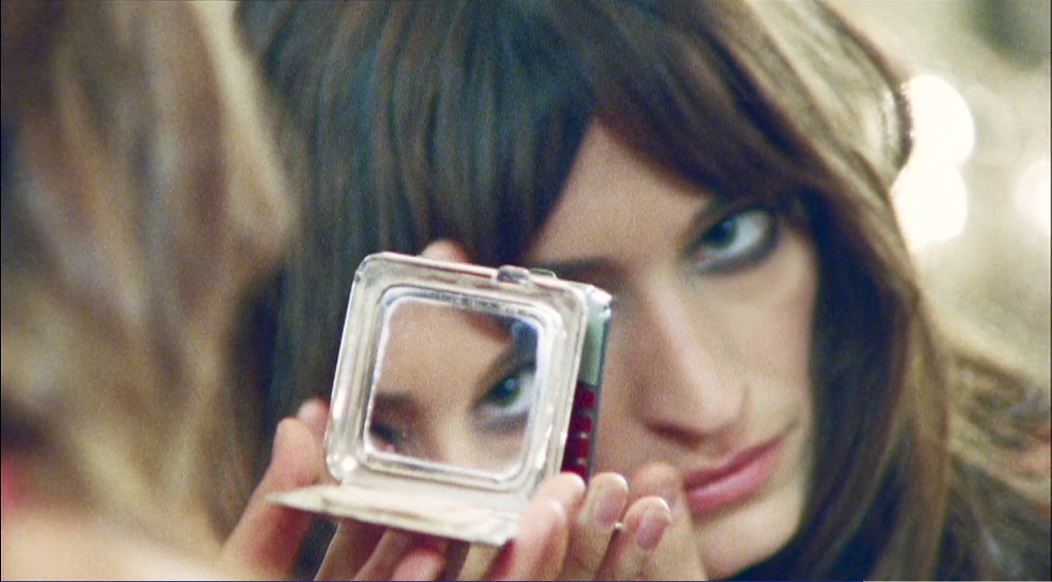Women Filmmakers and the Female Gaze
© The Powder Room by Zoe Cassavetes presented by Mui Mui and MUBI.
By Jennifer Iacobino
This week, the popular indie streaming service, MUBI, promoted their curated series of short films from women filmmakers whose work highlights the complexities of the women’s experience around the world. The directors featured in the series are all critically acclaimed filmmakers whose filmographies range from blockbusters to indie darlings.
One short entitled “The Powder Room” by Zoe Cassavetes, which was filmed with a handheld, has an almost home movie aesthetic. It walks the audience through the intimate and ritualistic experience of going to a powder room—a concept that a male filmmaker might not consider or quite understand. You can tell instantly that it was shot with the female gaze, a perspective evoked by the insert shots and close-ups of intimate places that women are typically drawn to, but that men might miss. It focuses on the tousled hair, not on the fingers threading it, and on the accuracy and attention of the reapplication of lipstick, but not the lips. These nuanced images are familiar and fresh to the women in the audience.
Another filmmaker, Malgorzata Szumowska, unqiuely interprets the women’s experience in her short “Nightwalk”. She utilizes the dolly, sharp color correction, and heavy metaphor in her cut-aways to tell the story in a more cinematic way, a style completely opposite to that of “The Powder Room”. She poses the question, “What is a woman?” and through the two principle characters, a girl and a man, offers an answer. Over the course of the film, they shed their gender-conforming clothes and reappear manifesting their preferred gender expression; exchanging heels for sneakers, pants for a skirt, until finally they appear before each other in the other’s clothes, ultimately more at home. It presents this question of gender identity not just in terms of personal experience, but in a familial context, too, as their mothers struggle to accept their children for who they are.
Film is a visual medium. Yet women and men experience their world visually in unique ways. These directors explore the meaning of womanhood in their stories and utilize symbols of that womanhood to share their experiences. Undoubtedly they have the talent to showcase these stories, however, the freshness is not in their talent or even the narratives. Instead, it is how they tell these stories that is singular. The ‘how’ is what remains with the audience after the credits roll, and the uniqueness of that ‘how’ comes from the uniqueness of the individual’s perspective.
This ongoing series is called Mui Mui’s Women’s Tales, where new films by women filmmakers are added and rotated daily.








